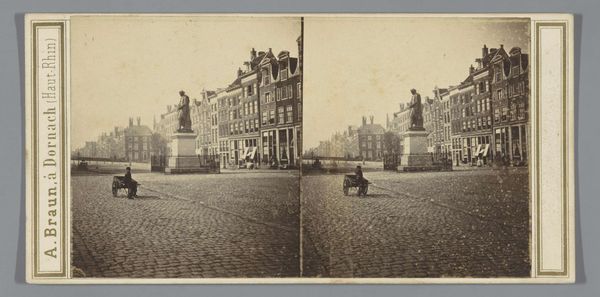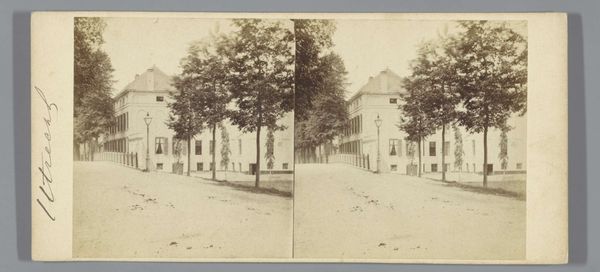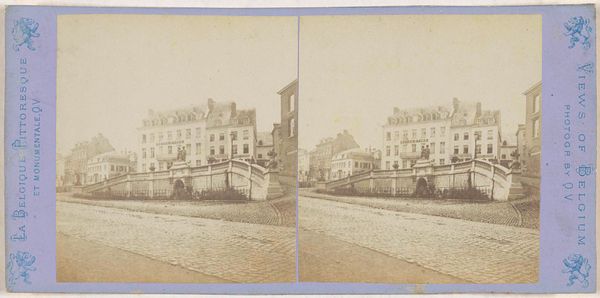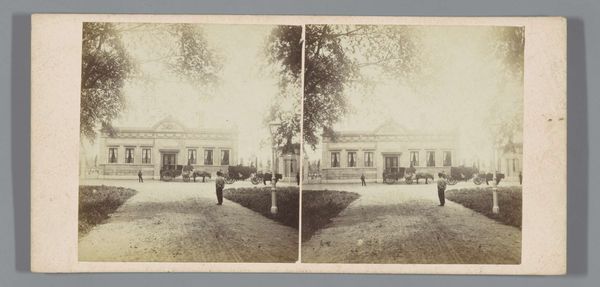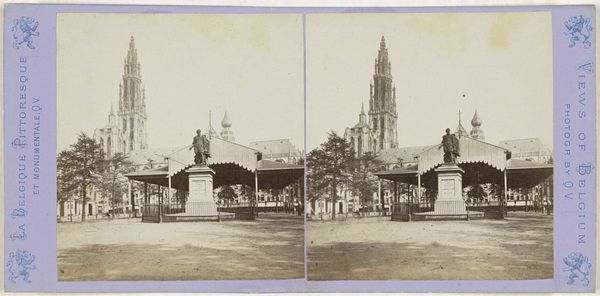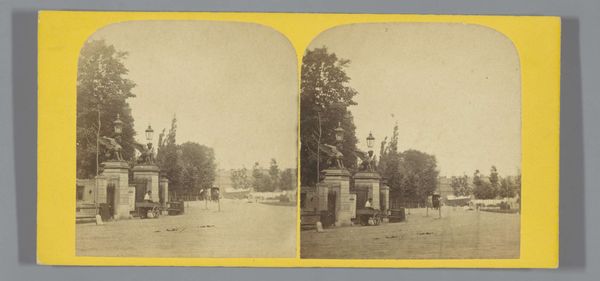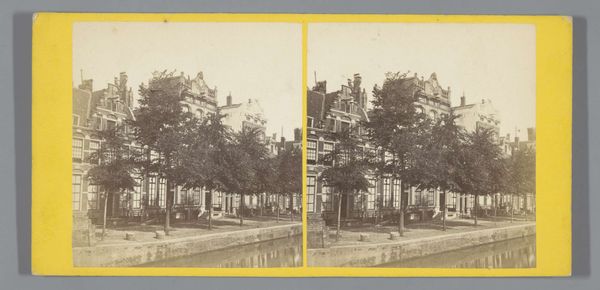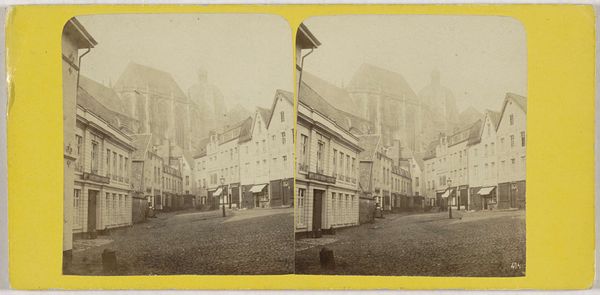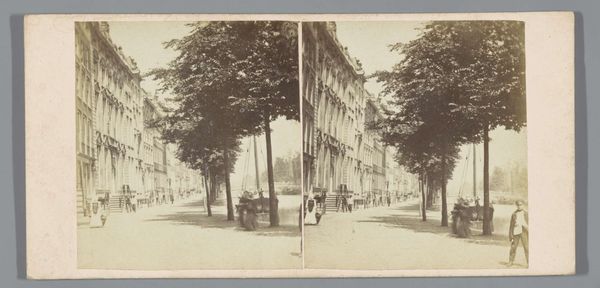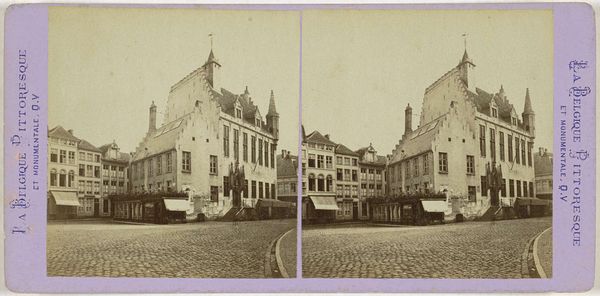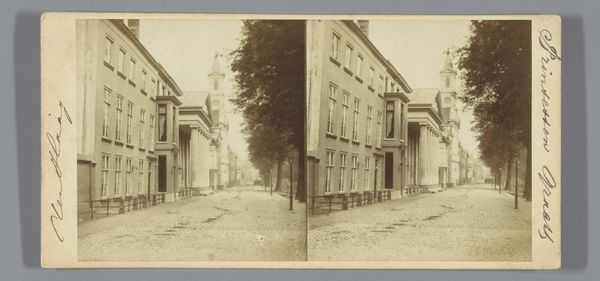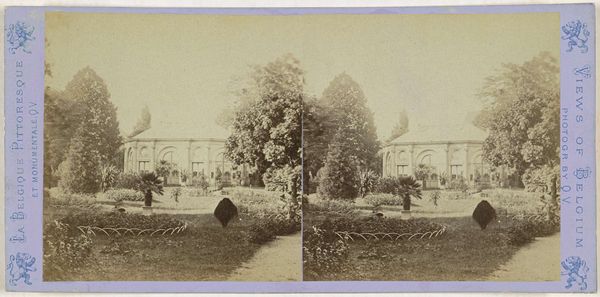
print, photography, gelatin-silver-print, albumen-print
# print
#
landscape
#
photography
#
gelatin-silver-print
#
cityscape
#
albumen-print
#
realism
Dimensions: height 82 mm, width 175 mm
Copyright: Rijks Museum: Open Domain
Curator: Ah, yes, this is "Koningsbrug in Rotterdam," a gelatin-silver print attributed to Pieter Oosterhuis, taken sometime after 1860. It resides here at the Rijksmuseum. What are your first thoughts? Editor: Austerity. An echo of neoclassical rigor, bleached and softened. That endless cobblestone street almost feels… melancholy. Curator: Interestingly, this melancholy you speak of may have been captured with the aid of albumen—egg whites were historically used in coating the photographic paper. Beyond the fascinating chemical process, I find this photo so evocative because it feels like stepping back in time. The light, the textures... Rotterdam as it once was. Editor: Rotterdam's story is often told through its reconstruction, but here, it's captured right before a massive reshaping, a literal paving over. The heavy masonry, those symmetrical sentry boxes... everything screams empire, capital, industry on the rise. Curator: True, the photograph definitely captures that spirit of ambition and burgeoning industrialization. The Koningsbrug, as the focal point, isn’t just a bridge, but also a symbol of connection and progress. Editor: But for whom was all this progress? That's what the stark contrast between the grandeur of the bridge and the anonymous figures walking it makes me wonder. Whose labor built this city? Where are the docks, the trade—all the bustle that must have existed just beyond the frame? The visible infrastructure always relies upon what goes unacknowledged. Curator: I hear your point. Maybe that’s where its staying power resides— the question of who benefits, which remains timeless. You notice how crisp everything appears in spite of its age? Oosterhuis clearly demonstrates a mastery of the photographic process. Editor: Agreed, the sharpness is startling. Yet I wonder if that crispness is, itself, a way of sanitizing a messier, more socially complex reality. Photography then—as now—selected and framed narratives about progress and public works. The question becomes, who controls the lens? Curator: Perhaps the most powerful question we can ask of any artwork, isn’t it? Thank you, I find that reframing deeply helpful. Editor: My pleasure. Every photo is more than the sum of its chemicals, it seems.
Comments
No comments
Be the first to comment and join the conversation on the ultimate creative platform.
